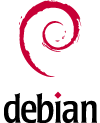 I’ve found a nice well-written guide that may be useful for those who wants to create Debian *.deb package. Though compiling applications/software/libraries right from sources are desireable for some people, there’s still lots of others who prefer to install stuffs software packages for conveniency.
I’ve found a nice well-written guide that may be useful for those who wants to create Debian *.deb package. Though compiling applications/software/libraries right from sources are desireable for some people, there’s still lots of others who prefer to install stuffs software packages for conveniency.
Why do you want to create Debian (*.deb) packages
There’s many reasons for you to create *.deb packages, one of it if you are (or want to be) a maintainer for a Debian-based project, or merely maintaining a unofficial packages for Debian-based system.
The guide would be useful if you are a software developer or in charge of distributing softwares in pre-package form to various GNU/Linux distribution. Creating a prepackage *.deb files will help people install your software without the need of developments tools and save compiling time, this is important since there are people who like to manage installations using software management tools such as synaptic and aptitiude.
Though most people would prefer to distribute binary only *.deb package, the practice of distributing pre-packaged source codes in *.deb format is not uncommon in Debian-based distro scene.
Here’s the link to the guide that I’m talking about :
Other Links :

 Seems that Mandriva Linux users doesn’t need to spend hours of unproductive work trying to figure how to work things out for their Mandriva Linux system.
Seems that Mandriva Linux users doesn’t need to spend hours of unproductive work trying to figure how to work things out for their Mandriva Linux system. 